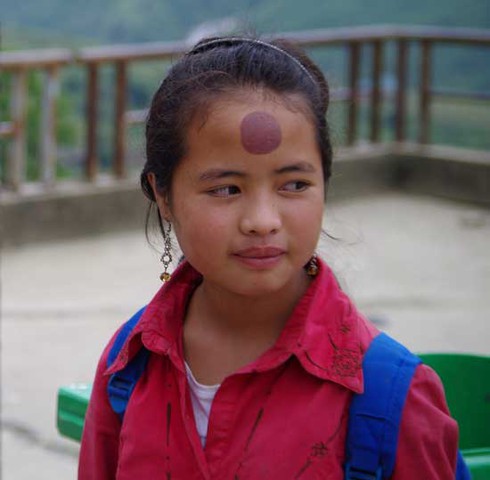Through the eyes of an expat
My tour guide Ma Thi Súa is from the Black Hmong Tribe, which is the largest tribe in Sa Pa. She is thirty-two years old and lives in the Lao Chai village with her four children and her husband. She has never attended school, which causes her illiteracy, and that is not uncommon for her generation, but due to the modernization her own children have been given the chance to attend school.
Although Ma Thi Súa has never been schooled she was still able to communicate in English, which she says “is because of the many tourists that are visiting every week”.
When trekking through the outstanding rice fields with my friends Ma Thi Súa passionately told us about the various traditions of the Black Hmong Tribe. The traditions that stood out the most were the ones including a buffalo horn. According to Ma Thi Súa the buffalo symbolizes, among other things, wealth and is therefore a highly respected animal.
Like several other tradition-bounded tribes the Black Hmong people are not to choose their own life-partner. Instead it is the parents’ responsibility to find a spouse for their children.
The initiative to propose is taken by the groom’s family; they will bring a buffalo horn filled with homemade rice wine to the bride of interest’s family. It is the parents’ of the bride decision whether or not they will let her marry the man. Assuming that the proposal is accepted the bride and the groom will share the rice wine with each other and their families and if the proposal is declined the bride’s family will not consume the rice wine and the family of the groom will pursue another potential wife.
Ma Thi Súa herself got married at the age of eighteen to a man she had never met due to the fact that he was from a village far away from her own. Although it was not love at first sight she is now grateful that her parents chose to accept the buffalo horn from his family.
Apart from using the buffalo horn as a way of engaging people the Black Hmong community believes the horn is a great tool for treating headaches. Whenever someone in the village has a headache they will heat up the stump end of the horn and press it against the person’s forehead. According to Ma Thi Súa it releases the pain entirely and she also ensures us that the burn mark on the forehead only will be visible for a couple of weeks.
As far as Ma Thi Súa knows these rituals have been practiced and passed on by her tribe for more than five hundred years with a few slight changes.




